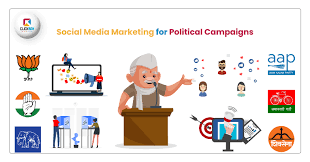In the rapidly evolving digital age, SEO (Search Engine Optimization) and content strategy have become powerful tools in shaping public perception, especially during election seasons. Political campaigns are no longer confined to traditional media outlets like television, radio, and print.
Instead, online has emerged as a dominant platform where candidates, parties, and supporters can communicate with voters. How these campaigns craft their message, optimize their digital content, and ensure their visibility on search engines can significantly influence voter behavior, engagement, and opinions.
Enhancing Visibility with SEO
At its core, SEO and content strategy offer a dynamic and targeted approach to reaching the right audience at the right time, making them indispensable tools in election campaigns. When employed correctly, they can help build a positive public image, control the narrative, and foster trust with voters.
One of the primary advantages of SEO during elections is its ability to enhance the visibility of candidates or political parties. When voters turn to search engines like Google, they often seek information on political platforms, candidate records, recent debates, or the latest election news. Through effective SEO techniques, campaigns can ensure that their content ranks highly on search engine results pages (SERPs), increasing their chances of being seen by a broad audience. This enhanced visibility allows candidates to reach potential supporters who have not received their message.
Moreover, ranking higher on search results has a psychological advantage. Studies have shown that people tend to trust the top results more than those that appear lower on the page. Therefore, when a candidate’s website or content consistently appears at the top of the search results, it creates a sense of credibility and authority. Voters often associate top-ranking content with reliability and trustworthiness, which can positively influence their perception of the candidate or party.
Controlling the Narrative
Beyond mere visibility, SEO also allows campaigns to control the narrative. In a highly competitive election, the digital space becomes a battleground for ideas, opinions, and news. By strategically optimizing content around specific keywords or topics, campaigns can ensure that their message dominates the conversation. For instance, if a candidate is known for their strong stance on healthcare reform, the campaign can focus on optimizing articles, videos, and blog posts highlighting their vision and healthcare plans. This approach minimizes the likelihood of negative stories or opposing viewpoints overshadowing the campaign’s message, allowing the candidate to maintain a consistent and positive image.
Crafting the Right Content
In addition to SEO, content strategy plays an equally important role in shaping how the public perceives a candidate or political party. Content is the heart of any political campaign in the digital age. Campaigns can create an engaging and relatable narrative that resonates with voters through carefully crafted blog posts, videos, podcasts, social media posts, and even memes. The content that campaigns produce is not just about broadcasting policies or achievements but about connecting with the audience emotionally.
A strong content strategy focuses on addressing voters’ needs, concerns, and desires. It involves understanding the electorate’s pulse and creating messages directly to them. For instance, if there is widespread concern about job opportunities in a particular region, a campaign can develop content that emphasizes the candidate’s plan to create new jobs and support local businesses. This content can then be optimized with SEO tactics, ensuring it reaches the right voters searching for solutions to their concerns.
Tailored Messaging for Specific Voter Groups
The ability to create tailored content for specific voter groups is one of the most powerful aspects of a content strategy. Different demographics, such as young voters, working professionals, or retirees, may have other priorities regarding the election. A well-executed content strategy allows campaigns to address these diverse needs by crafting messages that speak to each group individually. For example, young voters may be more interested in content addressing climate change or social justice, while older voters may prioritize healthcare and retirement benefits. By using SEO to ensure that this tailored content is easily accessible, campaigns can increase engagement and create a personal connection with voters.
Using Multimedia to Engage Voters
Furthermore, video and multimedia content have become increasingly important in political campaigns. In a world dominated by social media platforms like YouTube, Instagram, and TikTok, video content has proven to be one of the most effective ways to engage audiences. Videos can humanize candidates, showcase their personalities, and present their ideas in a more relatable and digestible format. Through compelling storytelling, candidates can connect with voters on a deeper level, creating a lasting impression. These videos can gain significant traction when paired with strong SEO practices, reaching a larger audience and further enhancing the candidate’s public image.
Social media platforms, in particular, have transformed how political campaigns operate. With the ability to share content instantaneously and interact with voters directly, social media has become a critical tool for shaping public opinion. By creating shareable content that is both informative and emotionally compelling, campaigns can leverage social media’s viral nature to amplify their message. A well-executed social media campaign can lead to widespread exposure, increased support, and greater voter turnout.
Optimizing Campaign Websites
In addition to creating content for social media platforms, campaigns must ensure their websites are optimized for search engines. A candidate’s website serves as the digital headquarters of their campaign, where voters can access important information about their policies, upcoming events, and voting instructions. By optimizing the website with SEO best practices, campaigns can ensure that it ranks highly in search results, making it easier for voters to find the information they need. A well-designed website that is easy to navigate also enhances the overall user experience, encouraging visitors to stay longer and engage more deeply with the campaign’s message.

